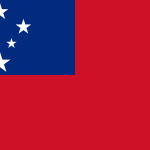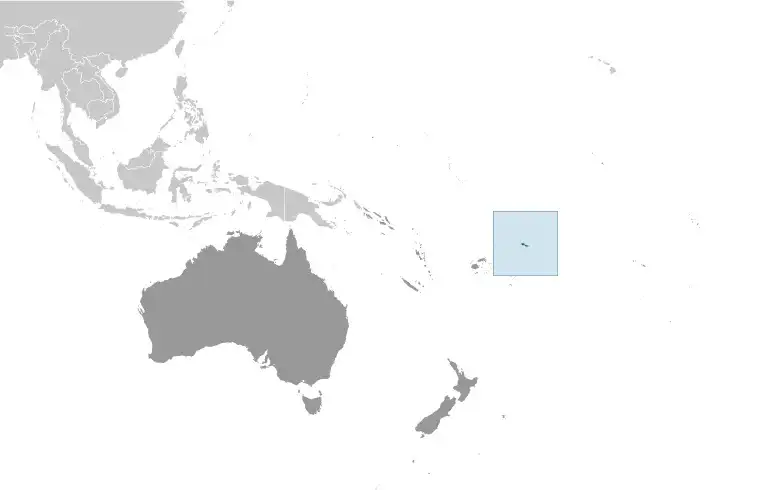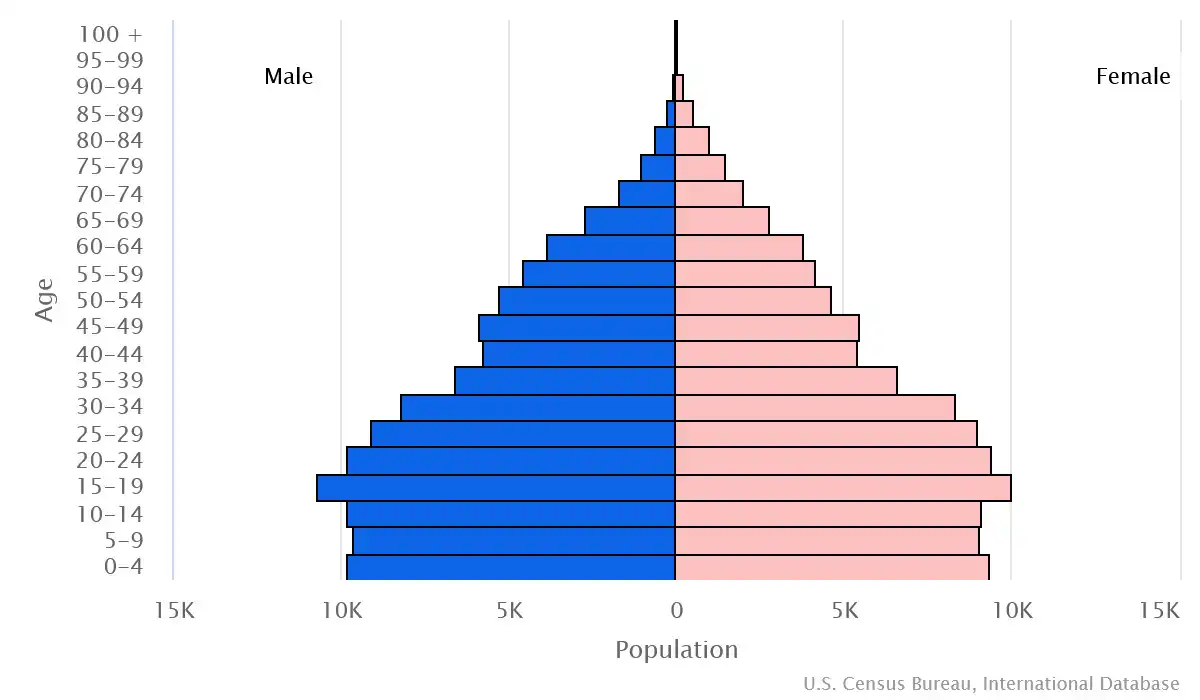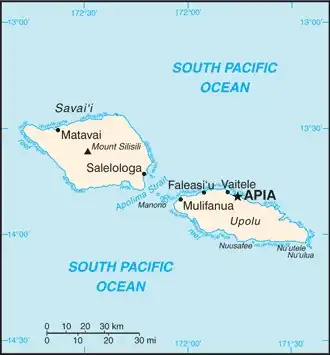
Samoa
Veröffentlicht: 20. June 2022 - Letztes Update: 28. February 2025
Country Data Dashboard

Population
208,853
Growth: 0.65% (2024 est.)
GDP
$938.189 million
(2023 est.)
Area
2,831 sq km
| Government type: | parliamentary republic |
| Capital: | Apia |
| Languages: | Samoan (Polynesian) (official) 91.1%, Samoan/English 6.7%, English (official) 0.5%, other 0.2%, unspecified 1.6% (2006 est.) |
People & Society
Ethnicity (2011 est.)
Religion (2016 est.)
Age structure

Economy
Economic overview
ower middle-income Pacific island economy; enormous fishing and agriculture industries; significant remittances; growing offshore financial hub; recently hosted Pacific Games to drive tourism and infrastructure growth
Real GDP (purchasing power parity) in Billion $
Real GDP per capita in $
Exports & Imports in million $
Top 5 Import Partner in 2022 (69%)
Top 5 Import Commodities in 2022
- refined petroleum ⛽
- coated flat-rolled iron 🛠️
- fish 🐟
- poultry 🍗
- ships 🚢
Top 5 Export Partner in 2022 (69%)
Top 5 Export Commodities in 2022
- coconut oil 🛢️
- integrated circuits 💻
- insulated wire 🔌
- citrus 🍊
- power equipment 🔋
Geography
Map

Area
Natural resources
- hardwood forests 🌳
- fish 🐟
- hydropower 💧⚡
Climate
tropical; rainy season (November to April), dry season (May to October)
Historical Background Information
The first Austronesian settlers arrived in Samoa around 1000 B.C., and early Samoans traded and intermarried with Fijian and Tongan nobility. The fa’amatai system of titles and nobility developed, which dominates Samoan politics to this day; all but two seats in the legislature are reserved for matai, or heads of families. A Dutch explorer was the first European to spot the islands in 1722. Christian missionaries arrived in the 1830s and were followed by an influx of American and European settlers and influence. By the 1880s, Germany, the UK, and the US had trading posts and claimed parts of the kingdom. In 1886, an eight-year civil war broke out, with rival matai factions fighting over royal succession and the three foreign powers providing support to the factions. Germany, the UK, and the US all sent warships to Apia in 1889 and came close to conflict, but a cyclone damaged or destroyed the ships of all three navies.
At the end of the civil war in 1894, Malietoa LAUPEPA was installed as king, but upon his death in 1898, a second civil war over succession broke out. When the war ended in 1899, the Western powers abolished the monarchy, giving the western Samoan islands to Germany and the eastern Samoan islands to the US. The UK abandoned claims in Samoa and received former German territory in the Solomon Islands.
New Zealand occupied Samoa during World War I but was accused of negligence and opposed by many Samoans, particularly an organized political movement called the Mau (“Strongly Held View”) that advocated for independence. During the 1918-1919 influenza pandemic, about 20% of the population died. In 1929, New Zealand police shot into a crowd of peaceful Mau protestors, killing 11, in an event known as Black Sunday. In 1962, Samoa became the first Polynesian nation to reestablish its independence as Western Samoa but dropped the “Western” from its name in 1997. The Human Rights Protection Party dominated politics from 1982 until Prime Minister FIAME Naomi Mata'afa's Fa'atuatua i le Atua Samoa ua Tasi (FAST) party gained a majority in elections in 2021.
At the end of the civil war in 1894, Malietoa LAUPEPA was installed as king, but upon his death in 1898, a second civil war over succession broke out. When the war ended in 1899, the Western powers abolished the monarchy, giving the western Samoan islands to Germany and the eastern Samoan islands to the US. The UK abandoned claims in Samoa and received former German territory in the Solomon Islands.
New Zealand occupied Samoa during World War I but was accused of negligence and opposed by many Samoans, particularly an organized political movement called the Mau (“Strongly Held View”) that advocated for independence. During the 1918-1919 influenza pandemic, about 20% of the population died. In 1929, New Zealand police shot into a crowd of peaceful Mau protestors, killing 11, in an event known as Black Sunday. In 1962, Samoa became the first Polynesian nation to reestablish its independence as Western Samoa but dropped the “Western” from its name in 1997. The Human Rights Protection Party dominated politics from 1982 until Prime Minister FIAME Naomi Mata'afa's Fa'atuatua i le Atua Samoa ua Tasi (FAST) party gained a majority in elections in 2021.
